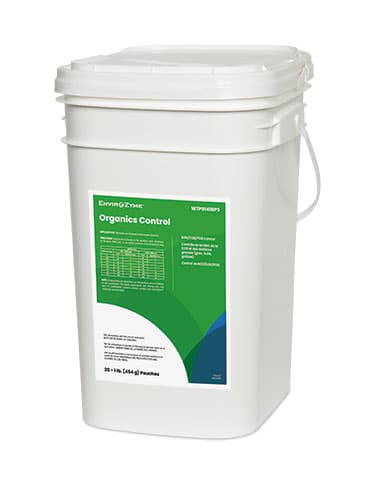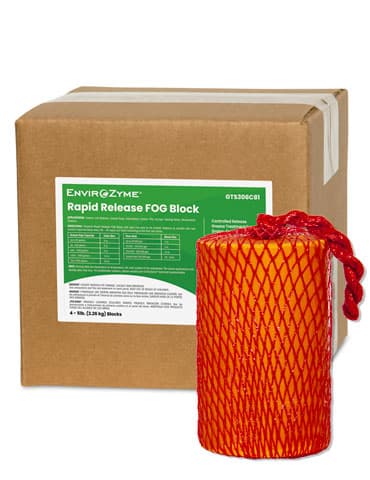
Understanding the Impact of Filaments in Wastewater Treatment Plants
Filamentous bacteria grow in long thread-like strands in which cells do not separate from each other after cell division and grow in the form of filaments. Filaments can dominate in wastewater treatment systems, which has both advantages and disadvantages. Continue reading to learn more.
Overview
The presence of a small number of filamentous bacteria is beneficial in floc formation. As the filaments connect to each other, they form a mesh that provides a support structure for other bacteria to attach to as they form floc.
However, excessive filament growth can cause potential problems with sludge settling, reducing the efficiency of wastewater treatment plants. Filamentous microorganisms can attain a high growth rate, despite having low substrate concentration and oxygen levels. They also proliferate due to the composition of wastewater and specific variations in wastewater, including flow and in low food to mass conditions as well as longer sludge age. Too many filaments cause bulking, which interferes with the compaction of settled sludge, which could dilute the wasting and return solids concentrations.
Identification
There are currently more than 87 filaments that have been found in industrial wastewater treatment systems. All can have an impact depending on abundance and relationship to the floc. Below are a list of some common filaments and their possible causes.

Nocardioforms
Oil and grease, low food-to-mass (F/M), foam trapping, long mean cell residence time (MCRT)

Microthrix parvicella
Anaerobic/anoxic zones, low temperature,
long sludge age, presence of lipids

Type 0041 & Type 0675
Low F/M, low dissolved oxygen (DO), pulp and paper

Thiothrix sp.
Low nutrients, organic acids, septicity, sulfides

Type 1851
Low F/M, readily degradable chemical oxygen demand (COD)

Nostocoida Limicola sp.
Nutrient deficiency, organic acids, phosphorous deficiency

Sphaerotilus
Low DO, high readily biodegradable (RB) COD

Type 0914
Presence of sulfides, high RBCOD

Type 1863
High F/M, high RBCOD

Type 021N
High RBCOD, nutrient deficiency, sulfides

H. hydrossis
Low DO, high F/M, low/moderate
sludge age

Type 0092
Long MCRT, very low F/M
Identifying filaments is important because each type of filaments can lead to a specific problem. Filaments vary in shapes, size, and other distinctive features, which is the best way to determine the type. Knowing the type can help operators understand the growth conditions in the reactors, which can prompt changing of the conditions and elimination of the problem.
Additionally, identifying the type of filamentous foam occurring in wastewater can help determine the cause:
| Foam Description | Cause(s) |
|---|---|
| Thin, white to gray foam | Low cell residence time or "young" sludge (startup foam) |
| White, frothy, billowing foam | Nonbiodegradable detergents |
| Pumice-like, grey foam (ashing) | Excessive fines recycled from other processes |
| Thick sludge blanket on the final clarifier(s) | Denitrification |
| Thick, pasty or slimy, greyish foam (industrial systems only) | Nutrient-deficient foam; foam consists of polysaccharide material released from the floc |
| Thick, brown, stable foam enriched in filaments | Filament-induced foaming, caused by Nocardia, Microthrix, or type 1863 |
The best way to identify filaments and foaming is through microscopic observation and, in some cases, molecular analysis. EnviroZyme offers a Microscopic Analysis service that provides an in-depth look into the health and efficiency and of water resource recovery facilities. Additionally, it examines the biomass processes that aid in the creation of clean effluent. The team analyzes floc, filaments, the presence of high life forms, and bulk water. As a result, customers receive a full system analysis, diagnostic, and recommendation, plus product recommendations.
"Using Microscopic Analysis will help prevent current and future problems with too many filaments in a wastewater treatment plant."
Control Measures
Microscopic Analysis can catch a filament problem before it becomes worse and cause issues with settling or dewatering. It leans towards a more proactive approach and less reactive, addressing the problem before it creates an issue. There are some control strategies that can be implemented.
Sludge Juggling
Sludge juggling involves manipulating the return activated solids and influent feed points to the aeration basin. Solids must be removed from the final clarifier faster than they are added, so the sludge flow rate must be increased to prevent the loss of solids to the effluent.
Polymer and Coagulant Addition
Several types of chemical additives can enhance activated sludge settling. Synthetic, high molecular weight, anionic polymers, alone or in combination with cationic polymers, are usually used to overcome the physical effects of filaments on sludge settling. Inorganic coagulants/precipitants can be beneficial as well because they produce a voluminous precipitate that sweeps down the activated sludge, improving settling.
Chlorination
Chlorine and hydrogen peroxide have been used to control filamentous organisms and stop bulking episodes. Chlorination exposes the activated sludge to sufficient chlorine to damage filaments extending from the floc surface while leaving organisms within the floc largely untouched.
Long-Term Measures
Long-term control methods include control of influent waste septicity, nutrient additions, changes in aeration, and changes in biomass concentration or waste feed pattern.
Products
EnviroZyme recommends using 2 products to help with general BOD/COD, FOG, and other organics reduction, which can drive filament growth.
- Organics Control is a highly effective blend of microorganisms and nutrients designed for general, all-purpose organics reduction in most types of industrial and municipal wastewater systems.
- Rapid Release FOG Block releases billions of beneficial bacteria to digest FOG and maintain clean, free flowing systems over a 30 – 45-day period.
Using Microscopic Analysis will help prevent current and future problems with too many filaments in a wastewater treatment plant. Organics Control and Rapid Release FOG Block will assist with managing organics to prevent an increase of filament growth. To speak with an EnviroZyme representative about Microscopic Analysis, products, and filaments in general, please fill out the form below.

